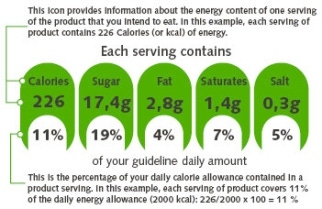March 11, 2015


European food label
Food companies have five years to implement the mandatory nutrition labeling rules of the European Union's Food Information to Consumers Regulation published today, said international policy experts EAS.
Xavier Lavigne, Food Law Manager at EAS, says that the clock starts ticking towards the five-year deadline for nutrition labeling requirements from 20 days after publication, therefore from Dec. 13, 2011.
The regulation requires a mandatory declaration on the label of the so-called ‘Big 7'—energy, fat, saturated fat, carbohydrates, sugars, protein and salt—by Dec. 13, 2016. It also requires these to be expressed per 100g/100ml and, where appropriate, per portion.
While most aspects of the regulation become applicable on Dec. 13, 2014, companies have been given an extended transition period until Dec. 13, 2016 to get in line with nutrition labeling requirements.
"The new food labeling regulation means inevitable changes for companies," Lavigne says. "The costs of conforming to the mandatory nutrient content rules will most likely hit the smaller food companies more than the larger ones, as many of the larger companies already have some type of nutrition labeling which will simply need to be adapted."
"However, for those companies wanting to voluntarily label their products with nutrition information between Dec. 13, 2014 when the regulation becomes applicable and Dec. 13, 2016 when the transition period for nutrition labeling ends," he adds, "they will have to comply with the regulations for nutrition declaration, regardless of the given transition period."
Other aspects of the regulation, with which companies must be compliant by the 13 December 2014 deadline, include new rules on allergen labelling and legibility.
"The regulation introduces a minimum font size of 1.2mm for all mandatory label information, and 0.9mm for products whose packaging has a largest surface of less than 80cm2," Lavigne says. "For manufacturers it means that knowing how to use the space on certain packages will be key. Already some companies are looking into the creation of understandable symbols in order to gain space and to deal with multilingual challenges. Most companies in the food sector will be pressured into a detailed review of their product packaging in the months and years to come."
Source: European Advisory Services
.
You May Also Like


